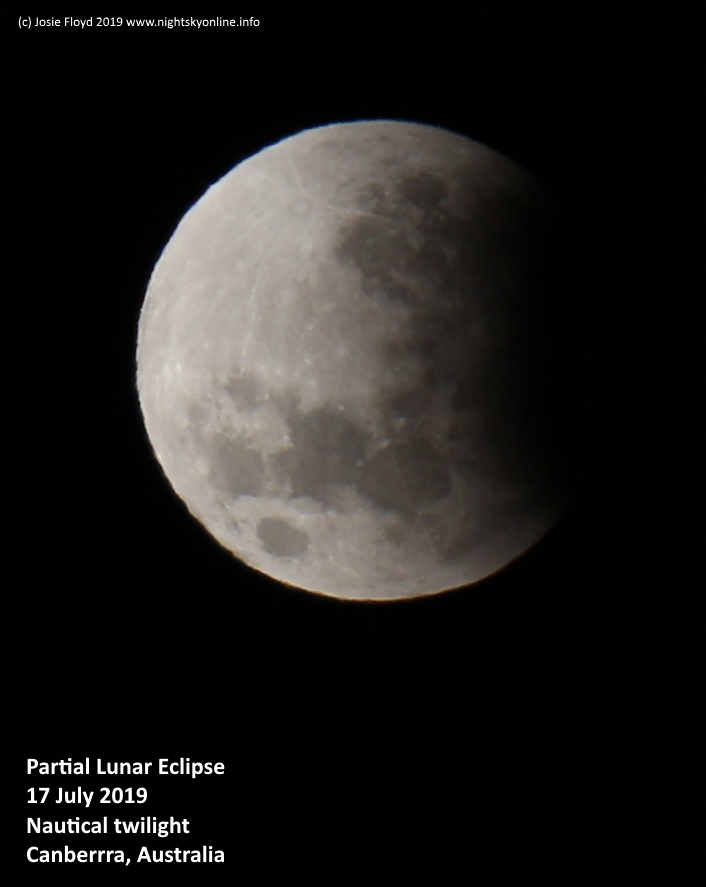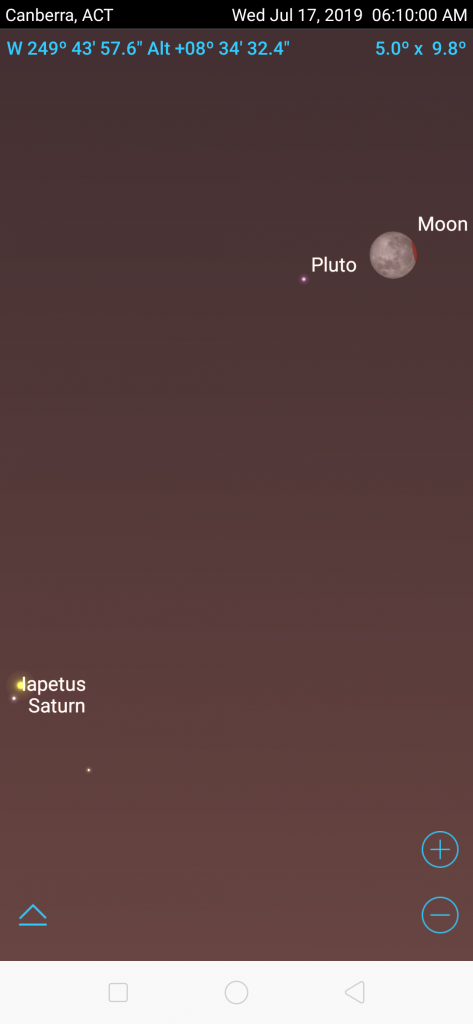A partial lunar eclipse will occur on the morning of Wednesday 17 July 2019. Unfortunately, for locations North of Canberra, Australia the partial phase will begin only after morning nautical twilight has started. Still if you have an interesting Western horizon you may be able to position the Moon with a feature on the horizon to capture an interesting wide angle image.


A lunar eclipse occurs when the Moon passes through the Earth’s shadow. Lunar eclipses can be total (the most impressive), partial or penumbral (often not visible to the unaided eye). Lunar eclipses are safe to observe directly.
Eclipse times
| Penumbral lunar eclipse begins | 4.42 am AEST |
| Partial lunar eclipse begins | 6.01 am AEST |
| Maximum partial lunar eclipse | 7.31 am AEST |
Depending on your local observing conditions, you can expect that the view of the lunar eclipse will become dramatically poorer as twilight begins. I have listed the start of nautical twilight for various locations to assist with planning wide angle horizon photography. At the time nautical twilight begins, the horizon will just visible to the unaided eye along with brighter stars. City bound observers will unfortunately have street lights to contend with.
| Location | Start of Nautical Twilight | Moonset |
| Cairns, Queensland | 5.56 am AEST | 6.49 am AEST |
| Brisbane, Queensland | 5.42 am AEST | 6.40 am AEST |
| Gold Coast (Mermaid Beach), Queensland | 5.42 am AEST | 6.39 am AEST |
| Sydney, New South Wales | 5.59 am AEST | 7.02 am AEST |
| Canberra, Australian Capital Territory | 6.10 am AEST | 7.14 am AEST |
| Melbourne, Victoria | 6.30 am AEST | 7.38 am AEST |
| Hobart, Tasmania | 6.30 am AEST | 7.44 am AEST |
Credit: Times calculated using the Sky Safari 6 Plus astronomy app.
A final bonus. If you are unfamiliar with the night sky, Saturn will be easy to locate by using the Earth’s moon as a celestial signpost. Just look for the pale yellow ‘star’ to the bottom left of the Moon (the Eight o’clock position on the old fashioned analog clock face). Saturn is 11 Moon widths from the Moon. If you have even a small telescope, Saturn’s rings will be easily visible in it. Saturn will only be a few days past opposition (July 10 2019) meaning that you will also be getting your best views of it in a telescope.